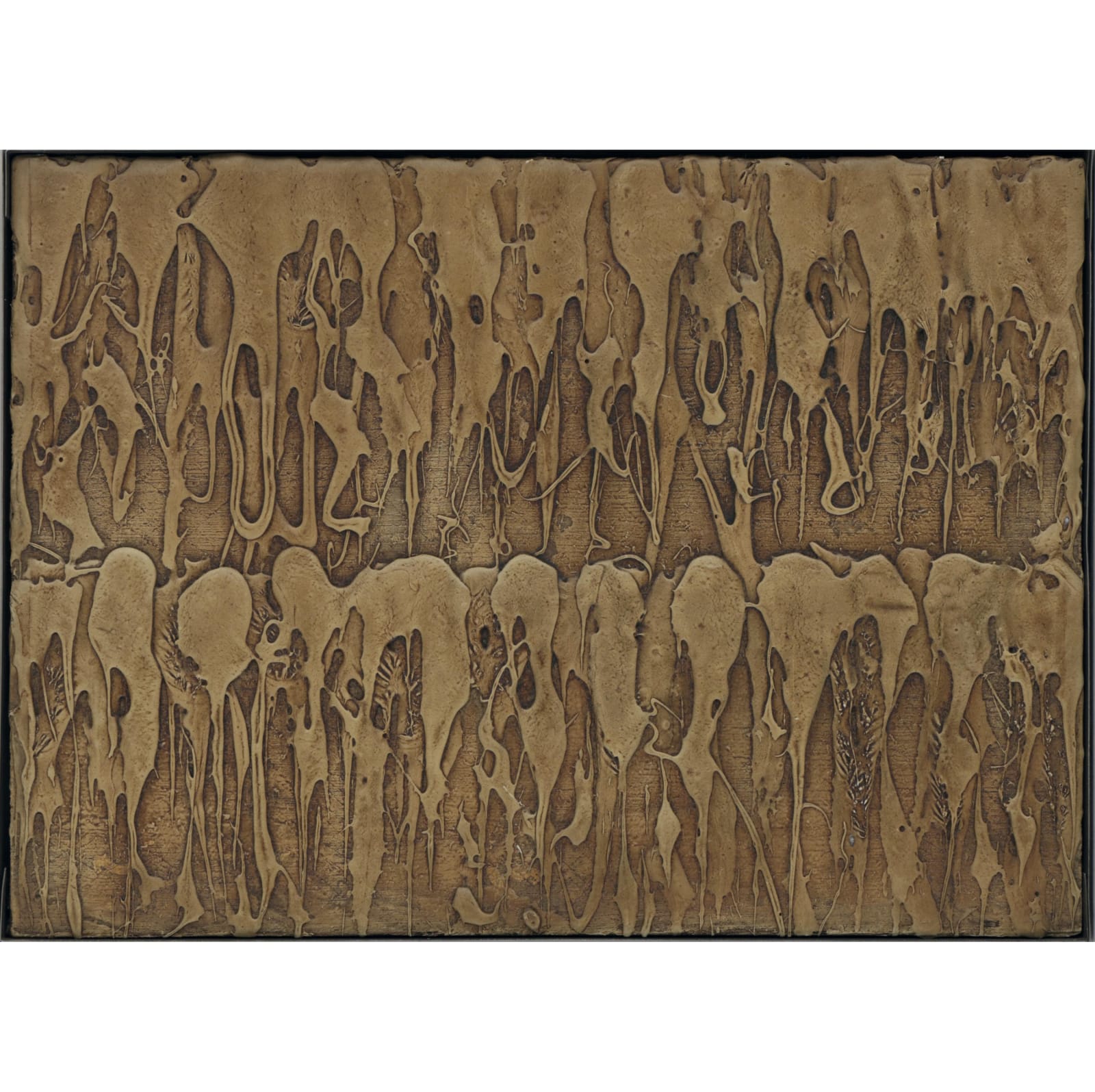Miyawaki Aiko (1929–2014)
Work
Oil on wood panel, framed (4F)
Signed by the artist on the back
Dated 1962
24.2 x 33.4 cm
24.8 x 34 cm (overall)
Signed by the artist on the back
Dated 1962
24.2 x 33.4 cm
24.8 x 34 cm (overall)
Further images
Due to her physical weakness, Miyawaki Aiko spent an introverted childhood, during which she developed an interest in painting and music under the influence of her aunt. Through her sister-in-law Kamiya Nobuko, a painter, Miyawaki was introduced to Abe Nobuya and Saito Yoshishige, under whom she learned painting. She later spent years in the United States, Italy, and France, and was active internationally. After her return to Japan in 1966, Miyawaki started to work on abstract sculpture using media such as glass and metals. She is best known for her Utsurohi (literally, transition) series, which are usually made of wire.
The present painting predates Miyawaki’s three dimensional art-making from the mid-1960s onwards, when she was having solo exhibitions of her oil paintings around the world. She mixed oil paints with powdered marble, and painted continuous forms with a painting knife. There is an anecdote of these paintings being commented as “tatami mat” by Yamamoto Takashi, founder of Tokyo Gallery, who held Miyawaki’s solo exhibition. Miyawaki herself once stated: “It started from the autistic part [of myself], and continues with an attempt to fill something endlessly, or to repeat [something] infinitively… [My oil paintings might be] reflections of such [emotion].” This repetition of the seemingly same forms is reminiscent of the title of her essay collection: No Beginning and No End. Although Miyawaki changed her genre and media to three dimensional works, such fundamental idea remains in her artistic making throughout her career.
Miyawaki Aiko (sculptor, yoga painter; 1929–2014)
Tokyo-born sculptor and painter. After her graduation from history major at Japan Woman’s University, she studies fine art under Abe Nobuya and Saito Yoshishige at Bunka Gakuin (institute of culture). Later studied in the United States, and held solo exhibitions in Milan, Paris, and New York. Started producing three dimensional works with metal and glass since late 1960s. Received a purchase award from the Guggenheim Museum in 1967. Exhibited extensively in and out of Japan.
The present painting predates Miyawaki’s three dimensional art-making from the mid-1960s onwards, when she was having solo exhibitions of her oil paintings around the world. She mixed oil paints with powdered marble, and painted continuous forms with a painting knife. There is an anecdote of these paintings being commented as “tatami mat” by Yamamoto Takashi, founder of Tokyo Gallery, who held Miyawaki’s solo exhibition. Miyawaki herself once stated: “It started from the autistic part [of myself], and continues with an attempt to fill something endlessly, or to repeat [something] infinitively… [My oil paintings might be] reflections of such [emotion].” This repetition of the seemingly same forms is reminiscent of the title of her essay collection: No Beginning and No End. Although Miyawaki changed her genre and media to three dimensional works, such fundamental idea remains in her artistic making throughout her career.
Miyawaki Aiko (sculptor, yoga painter; 1929–2014)
Tokyo-born sculptor and painter. After her graduation from history major at Japan Woman’s University, she studies fine art under Abe Nobuya and Saito Yoshishige at Bunka Gakuin (institute of culture). Later studied in the United States, and held solo exhibitions in Milan, Paris, and New York. Started producing three dimensional works with metal and glass since late 1960s. Received a purchase award from the Guggenheim Museum in 1967. Exhibited extensively in and out of Japan.





